 |
 |
|
|
|
| |
Dolmabahce Sarayi, the Palace on the Bosphorous

|
| |
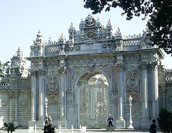 |
 |
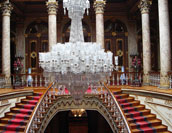 |
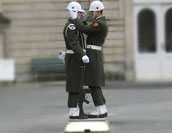 |
|
| |
Sultan Abdulmecid I commissioned Armenian architect Garabet Balyan
to design Dolmabahce Sarayi, or Dolmabahce Palace. From its
dedication in 1856 through the reign of Ataturk, which ended in
1938, this exquisite example of the blending of European and Ottoman
designs displayed the wealth and power of its owners to visiting
officials.
Construction of the elaborate palace's two hundred eighty-five rooms,
six baths, forty-six halls, six galleries, and four grand salons,
began in 1846 and lasted nine years. Because the land on which it
was built was a shallow bay reclaimed from the Bosphorous nearly
three hundred years earlier, it was named Dolmabahce, meaning
"filled garden".
The stunning and intricate decoration of Dolmabahce Palace was
designed by Séchan, famous for directing the interior design of the
Paris Opera. The crystal fireplaces, hundreds of paintings, vases,
and candelabras were imported from all over Europe, despite the
Turkish layout of the halls and living quarters.
The neo-baroque palace consists of several sections. Official
business and religious ceremonies were conducted in the enormous
ceremonial hall. A sea gate allowed visitors to arrive at Dolmabahce
Sarayi by water. Magnificent gardens sprawl behind the palace but
the amazing facade greets you from the Bosphorous. To one side, the
administrative section holds four halls on two floors, with rooms
for entertainment, study, and prayer, as well as the sultan's
imperial bath suite.
|
|
| |
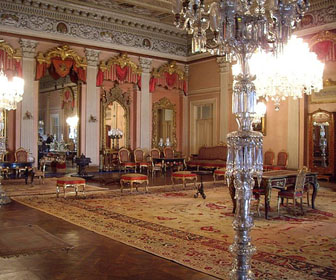 |
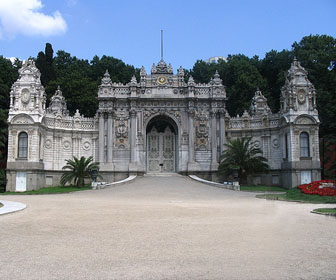
|
|
| |
The harem section, where the reigning sultan's mother, wives, and
concubines lived, lies opposite the administrative wing. Of its ten
halls, the Blue Hall on the second floor was the main meeting place
for these women. Gardens surround both wing of the palace. The
Palace of the Crown Prince lies just east of the harem wing,
separated from Dolmabahce Sarayi by a wall and fence.
Ataturk, Turkey's founder and first president, lived at the palace
near the end of his life. The room at Dolmabahce containing his
death bed can be visited along with the rest of the museum.
Time stands still in Dolmabahce Sarayi, where one hundred and
ninety-three clocks have been stopped at the time that Ataturk died
on November 10, 1938.
Soldiers at Dolmabahce Palace are famous for
standing at attention, without moving a muscle, for the hours they remain on duty.
The original furnishing, draperies, and
decorations remain guided tours allow long-past rulers to impress
their visitors still.
|
|
| |
|
|
| |
|
<-Back
|
|
|
 |
|
